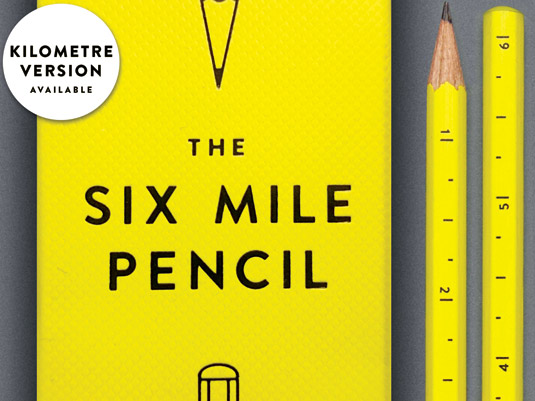How to crowdfund your next design project
Kick-start that brilliant idea with our expert guide to acquiring all the funds you need.
It's a sad fact that brilliant ideas often remain just brilliant ideas when there's no money to transform inspiration into a product. Even something as seemingly simple as taking some Moleskine notebook sketches and turning them into a run of posters or T-shirts can be a shockingly expensive aspiration.
But let's say for a moment you're determined to turn your ideas into a reality. What are your options? Well, you could go cap-in-hand to the bank, borrow from your friends and family, or – if you're really zealous – live like a monk, save and fund your scheme that way. None of these options are, if we're honest, terribly attractive.
There is however another way to find cash to fuel your business dream: crowdfunding. You've probably heard the term and maybe even toured sites like Kickstarter. If not, crowdfunding lets you present your business plan to a huge audience of internet users and ask them for small donations or investments.
Crowdfunding: the basics
Crowdfunding and other alternative methods of raising finance make for a huge market. A report by Nesta called The Rise of Future Finance stated that the UK alternative funding market grew from £492m in 2012 to £939m in 2013. The report predicted that £1.6bn might be raised in 2014.
There are lots of different crowdfunding platforms. Despite their differences, they work in much the same way. You create a page on the platform's site detailing your project, set a funding target and watch the promises come flooding in.

If you're lucky, you'll achieve or surpass your goal and this will trigger a process that culminates in the funds heading your way. If you don't hit your goal, your page will be taken down. In the main, you won't receive any money if you fail to achieve your target.
For their trouble, the funding platform levies a fee. This ranges from 4 to 9 per cent of the total funds you've been promised. You may also have to pay admin changes and VAT too.
Daily design news, reviews, how-tos and more, as picked by the editors.
Picking the right type of fund
Despite being the best known funding platform, Kickstarter is just one of many services on offer. There are, in broad terms, four different types of funding platforms available. Each approach has its strengths and weakness. As such, it pays to make the right choice before ploughing on and launching your funding drive.
The most simple style of funding is the donation model. Here, supporters give cash to a start-up and don't have any expectation of a return. Just Giving's Yimby.com is a prime example of this.
Next up, we have reward-based crowdfunding, where givers donate with the expectation of receiving something in return. Kickstarter is, of course, the best known platform of this type. David Lesue – a graphic design and art director, used Kickstarter to fund his Stately Type project.

Through Stately Type, Lesue sells city, state and country themed typographic T-shirts and posters. He told us: "I decided to crowdfund the project because it seemed like the perfect way to prove the project's worth before I invested too much of my time, money, or energy."
Looking at his project's Kickstarter page, he offered – as most projects do – a sliding scale of donation. A dollar bought you a handshake, $10 a printable PDF and $150 a pack of six T-shirts, with lots of options between these three points.
If you are interested in this kind of funding, try exploring Crowdfunder, Indiegogo, Zequs and Sponsorcraft platforms. And, of course, Kickstarter.
The loan or debt model
Next up is the loan or debt model. Here a business borrows funding and promises to repay the money with interest. Abundance Generation, Funding Circle, Funding Empire, Money&Co and Trillion Fund offer start-ups access to this kind of funding.
The fourth type of crowdfunding is equity funding. Here, support is provided in return for an equity stake (or share) in the business. Crowdcube, Seedrs, Angels Den and Syndicate Room embrace this model.

If you're struggling to choose the type of funding model you're going to pursue, it's worth considering the scale of your funding drive. Donation and reward models tend to raise smaller amounts of money. If you're looking to launch a more complex project, loan and equity based models are more applicable.
Heading to the UK Crowdfunding Association's website is a good place to start. It has nearly 40 members, each offering a subtly different spin on funding. Importantly, the member firms have all signed a code of practice.
Market yourself
With the hard business decisions made, you now need to move into marketing mode – you need to get your message out as far and wide as possible.
Funding sites will generally let you produce a shopfront page on their site where you can tell your project's story.

One of the most potent ways to improve this page – and so your chances of hitting your funding goals – is to produce a video pitch. It's by far the most effective way of telling prospective funders what's great about your product.
With your video make and your pitch page complete, it's time to embrace social media with a fervour close to madness. The key is to have a constant output of messages. Don't splurge and then go quiet.
Tell your friends and family first
Finally, before you launch your project, talk to friends and family, and persuade them to back your project with some small contributions. When your campaign goes live, their financial support will give your project an instant lift.
This is beneficial because investors generally don't like to be the first to back a project. They're more likely to smile on a project that's got some momentum and is heading somewhere.
This article first appeared in Computer Arts 235: Branding Secrets, a special issue exclusively revealing the brand strategy secrets at the world's biggest agencies.
Like this? Try these...
- 15 great places to sell your design work online
- 7 ways to quickly clean up your digital clutter
- Photoshop tips, tricks and fixes to try today

The Creative Bloq team is made up of a group of art and design enthusiasts, and has changed and evolved since Creative Bloq began back in 2012. The current website team consists of eight full-time members of staff: Editor Georgia Coggan, Deputy Editor Rosie Hilder, Ecommerce Editor Beren Neale, Senior News Editor Daniel Piper, Editor, Digital Art and 3D Ian Dean, Tech Reviews Editor Erlingur Einarsson, Ecommerce Writer Beth Nicholls and Staff Writer Natalie Fear, as well as a roster of freelancers from around the world. The ImagineFX magazine team also pitch in, ensuring that content from leading digital art publication ImagineFX is represented on Creative Bloq.
